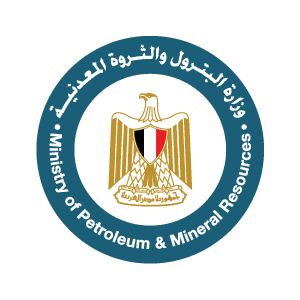Urea
Urea is a remarkable chemical compound with extensive applications in both agriculture and industry.
Overview of Urea
Definition and Chemical Structure
Urea, chemically known as carbamide, is an organic compound with the formula CO(NH2)2. It consists of two amine groups (-NH2) joined by a carbonyl functional group (C=O). Urea is highly soluble in water and has the unique property of being a neutral molecule, which makes it suitable for a wide range of applications.
Historical Background
Urea was first discovered in 1773 by the French chemist Hilaire Marin Rouelle. However, its significance was truly realized in 1828 when Friedrich Wöhler synthesized urea from inorganic compounds, marking the first time an organic compound was artificially created. This breakthrough laid the foundation for the field of organic chemistry and highlighted urea’s potential in various applications.

Properties of Urea
Physical Properties
- Appearance: White crystalline solid
- Melting Point: 133°C (271.4°F)
- Density: 1.32 g/cm³
- Solubility: Highly soluble in water and slightly soluble in alcohol
Chemical Properties
Reactivity: Urea is relatively stable but can decompose at high temperatures, releasing ammonia and carbon dioxide.
Hygroscopicity: Urea absorbs moisture from the air, which can affect its handling and storage.
Production of Urea
Raw Materials
The primary raw materials for urea production are ammonia (NH3) and carbon dioxide (CO2), both of which are derived from natural gas or other hydrocarbons.
Production Process
The industrial production of urea involves the following steps:
Ammonia Synthesis: Ammonia is produced from natural gas through the Haber-Bosch process.
Carbon Dioxide Production: CO2 is obtained as a byproduct of ammonia synthesis or other industrial processes.
Urea Synthesis: Ammonia and carbon dioxide react under high pressure and temperature to form ammonium carbamate, which is then dehydrated to produce urea.
Industrial Scale Production
Urea production is carried out in large chemical plants using advanced technologies to ensure efficiency and high purity. Major producers include companies such as Yara International, CF Industries, and Nutrien.
Applications of Urea
Agriculture
Fertilizer
Urea is the most commonly used nitrogen fertilizer in the world. Its high nitrogen content (46%) makes it an efficient and cost-effective option for providing essential nutrients to crops. Urea enhances plant growth and boosts crop yields, contributing significantly to global food production.
Soil Amendment
Urea can also be used to improve soil quality. It helps in balancing soil pH levels and provides a readily available source of nitrogen, promoting healthy plant development.

Industrial Uses
Chemical Industry
In the chemical industry, urea is used as a raw material for producing various chemicals, including urea-formaldehyde resins, melamine, and barbiturates. These chemicals are essential in the manufacturing of plastics, adhesives, and pharmaceuticals.
Automotive Industry
Urea is a key component in selective catalytic reduction (SCR) systems used in diesel engines. SCR systems reduce nitrogen oxide (NOx) emissions by injecting a urea solution (AdBlue or DEF) into the exhaust stream, converting harmful pollutants into harmless nitrogen and water.
Other Applications
Animal Feed: Urea is used as a protein supplement in animal feed, particularly for ruminants like cattle and sheep.
Medical Field: Urea is used in dermatology products for its moisturizing properties and in some medical tests to measure kidney function.
Benefits of Using Urea
Agricultural Benefits
Urea’s high nitrogen content and cost-effectiveness make it an ideal fertilizer for boosting crop yields. Its application helps farmers achieve higher productivity, contributing to food security and agricultural sustainability.
Industrial Benefits
Urea’s versatility in the chemical and automotive industries underscores its importance. It serves as a critical raw material in manufacturing and environmental protection, supporting various industrial processes and reducing pollution.
Economic Advantages
Urea is relatively inexpensive to produce and transport, making it a cost-effective choice for both agricultural and industrial applications. Its widespread availability ensures that it remains an accessible resource for farmers and manufacturers alike.
Challenges and Limitations
Environmental Impact
While urea is beneficial for agriculture, its excessive use can lead to environmental issues such as water pollution and greenhouse gas emissions. Proper management and application techniques are essential to mitigate these impacts.
Storage and Handling
Urea’s hygroscopic nature requires careful storage and handling to prevent clumping and degradation. Ensuring dry and cool storage conditions is critical to maintaining its quality.
Innovations in Urea Production and Application
Sustainable Practices
Recent advancements focus on sustainable urea production methods, including the use of renewable energy sources and more efficient catalytic processes. These innovations aim to reduce the environmental footprint of urea production.
Enhanced Efficiency
Innovations in urea application, such as controlled-release fertilizers and precision farming techniques, improve nitrogen use efficiency. These approaches help minimize environmental impact while maximizing agricultural benefits.
Future Prospects
Market Trends
The global demand for urea is expected to grow, driven by increasing agricultural needs and industrial applications. The development of more sustainable and efficient production methods will support this growth.
Research and Development
Ongoing research aims to enhance urea’s effectiveness and reduce its environmental impact. Advances in biotechnology and chemical engineering hold promise for the future, potentially leading to new applications and improved sustainability.

Comparative Analysis
Urea vs. Other Fertilizers
Compared to other nitrogen fertilizers like ammonium nitrate and ammonium sulfate, urea offers higher nitrogen content and cost-effectiveness. However, its proper application and management are crucial to prevent potential environmental issues.
Cost Comparison
Urea is generally less expensive than other nitrogen fertilizers, providing a cost-effective solution for farmers. Its affordability and high efficiency make it a preferred choice in agriculture.
User Guide
Safe Handling of Urea
Personal Protective Equipment (PPE): Wear gloves and eye protection when handling urea to avoid skin and eye irritation.
Ventilation: Ensure good ventilation when working with urea to prevent inhalation of dust.
Storage Guidelines
Containers: Store urea in tightly sealed containers to prevent moisture absorption.
Temperature: Keep urea in a cool, dry place to maintain its stability and prevent degradation.

(FAQs)
What is urea used for?
Urea is primarily used as a nitrogen fertilizer in agriculture, but it also has applications in the chemical industry, automotive industry, animal feed, and medical field.
How is urea produced?
Urea is produced from ammonia and carbon dioxide through a chemical reaction under high pressure and temperature. The process involves synthesizing ammonium carbamate, which is then dehydrated to form urea.
Is urea environmentally friendly?
While urea is biodegradable and can be beneficial for crops, excessive use can lead to environmental issues such as water pollution and greenhouse gas emissions. Proper management and application techniques are necessary to mitigate these impacts.
What are the benefits of using urea in agriculture?
Urea provides a high nitrogen content, which is essential for plant growth. It is cost-effective, improves crop yields, and contributes to sustainable agricultural practices.
How should urea be stored and handled?
Urea should be stored in a cool, dry place in tightly sealed containers to prevent moisture absorption. When handling urea, it is important to wear personal protective equipment (PPE) and ensure good ventilation to avoid skin and respiratory irritation.
Conclusion
Summary of Key Points
Urea is a versatile and essential compound with significant applications in agriculture and industry. Its high nitrogen content and cost-effectiveness make it a vital fertilizer, while its industrial uses highlight its importance in various processes. Despite some environmental challenges, innovations in production and application continue to enhance urea’s benefits.






